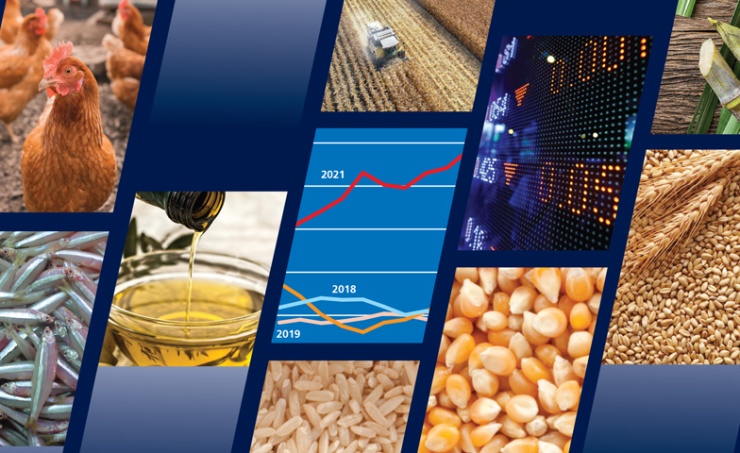Rome, November 12 (BNA) A new report issued by the United Nations Food and Agriculture Organization (FAO) said today, Thursday, that global food trade is expected to reach an unprecedented record level in terms of volume and value.
By the end of 2021, the global food import bill should exceed $1.75 trillion, representing a 14 percent increase from the previous year, and 12 percent higher than previous forecasts.
According to the new FAO Food Outlook, trade in food has shown “remarkable resilience” in the face of disruptions throughout the pandemic, but rapidly rising prices pose significant challenges to poor countries and consumers.
This increase was driven by higher levels of internationally traded food commodities and a threefold increase in freight costs.
Developing regions account for 40 percent of the total, and their food import bill is expected to rise 20 percent over the previous year. Faster growth is expected in Low-Income Food-Deficit Countries (LIFDCs).
In terms of products, developing regions face sharp increases in staple foods such as cereals, animal fats, vegetable oils and oilseeds.
In developed regions, while high-value foods, such as fruits, vegetables, fish products, and beverages, are driving the bulk of the increases.
The outlook for global production of the major grain remains strong, with record crops expected for maize and rice. Cereals intended for consumption and animal feed should grow faster.
The outlook anticipates some improvements in the supply situation for oilseeds and derived products, but end-of-season stocks may remain below average.
The world’s sugar production should recover, after three years of contraction, but it is still below the level of global consumption. In general, trade is expected to decrease slightly due to lower supply in important exporting countries and higher prices.
The report says that meat production should expand, due to the rapid recovery in China, especially pork. A slowdown in growth in trade is likely due to the decline in major importing regions, mostly in Asia and Europe.
Milk production is expected to grow, with increases expected in all major production regions, primarily Asia and North America. Global trade should also rise, even with the slowdown in the rate of import growth in the past few months.
Finally, fisheries and aquaculture production is expected to increase by 2%. For the FAO, this shows that the new market dynamics resulting from the pandemic are likely to continue. Despite rising shipping costs and logistical delays, the fish trade is also recovering.
To study the effects of rising input costs on food prices, FAO experts have created a new tool called the Global Input Price Index (GIPI).
According to the report, the new GIPI has moved synchronously with the Food Price Index (FFPI) since 2005, meaning higher input costs translate into higher food prices.
This year, through August, the FFPI is up 34 percent and the Global Intellectual Property Initiative is up 25 percent. The report also notes that sectors and regions are affected differently.
Soybean producers, for example, have less demand for expensive nitrogen fertilizers, so they should take advantage of higher product prices. On the other hand, pig producers face high feed costs, and low meat prices, narrowing their margins.
The analysis also points to a growing number of countries, currently 53, where families spend more than 60 percent of their income on necessities such as food, fuel, water and housing.
insult
